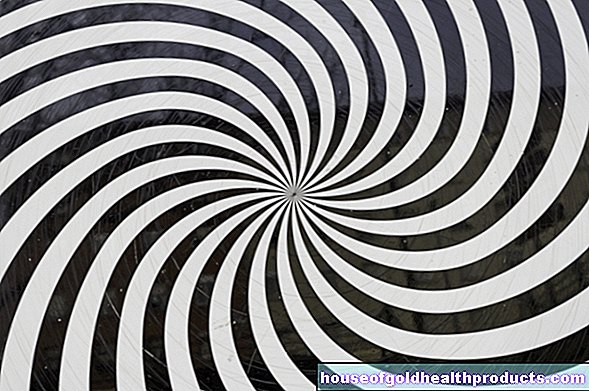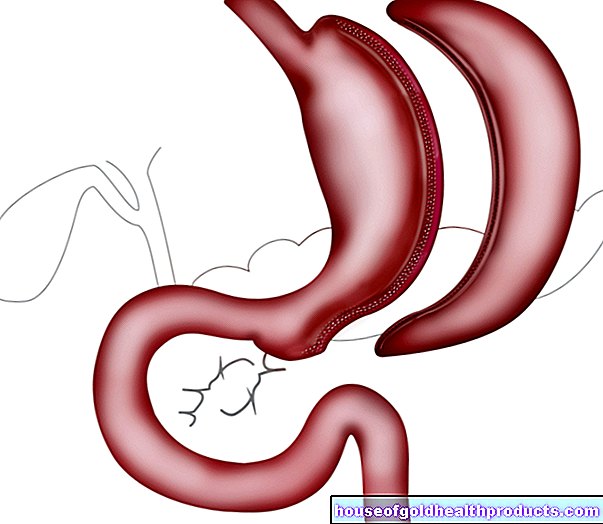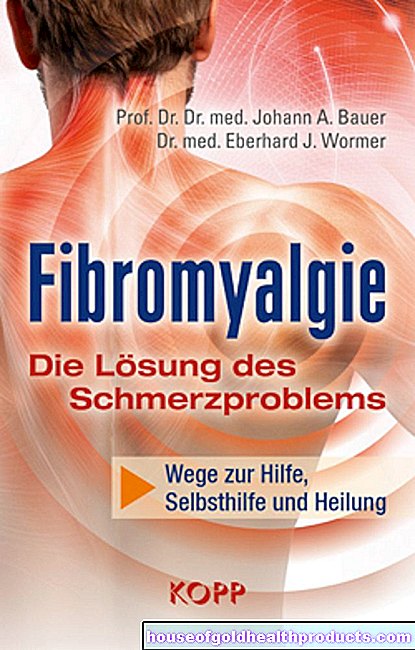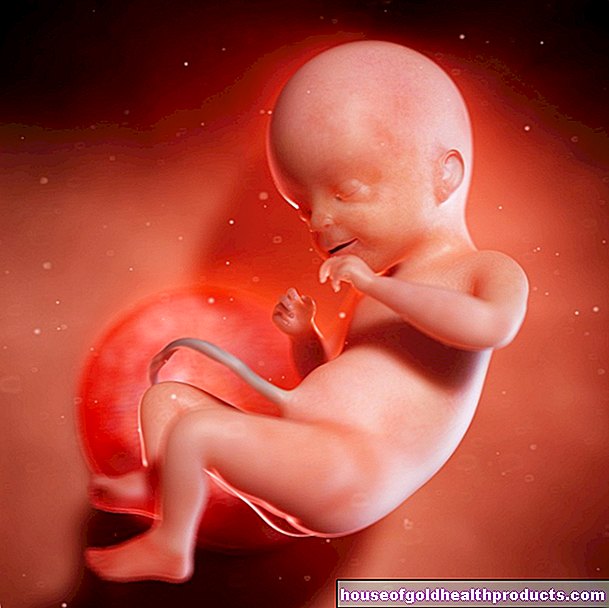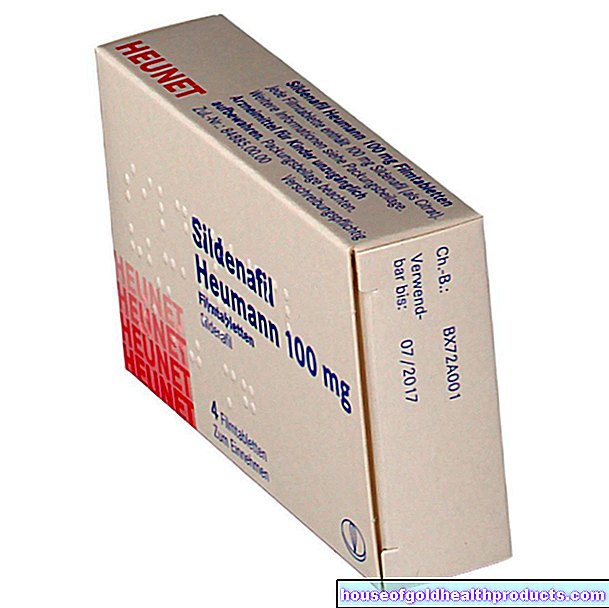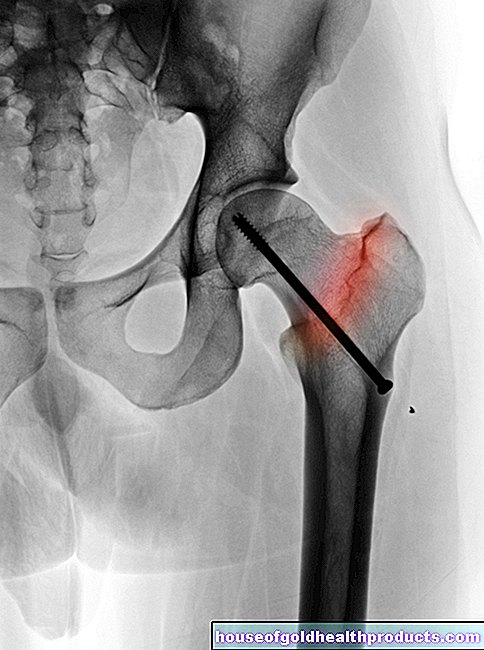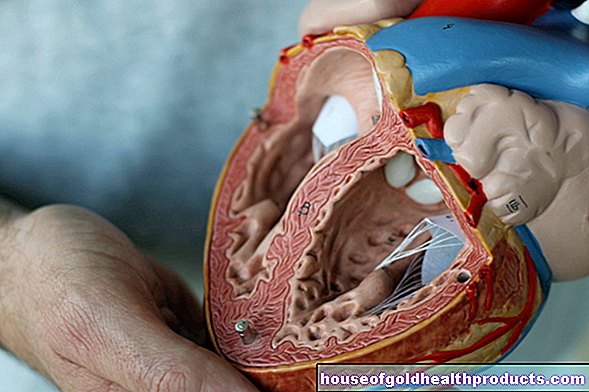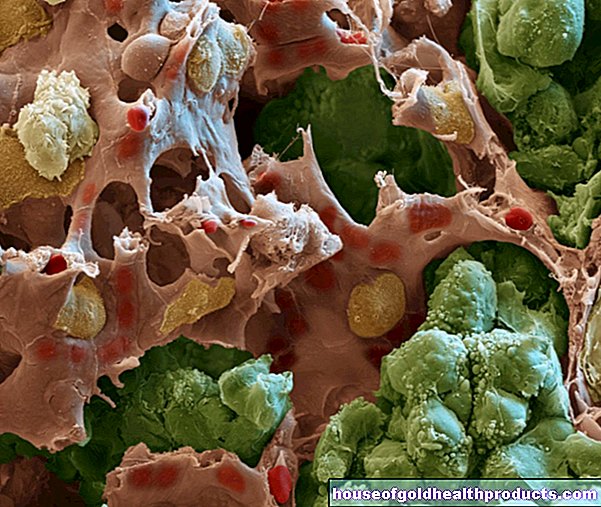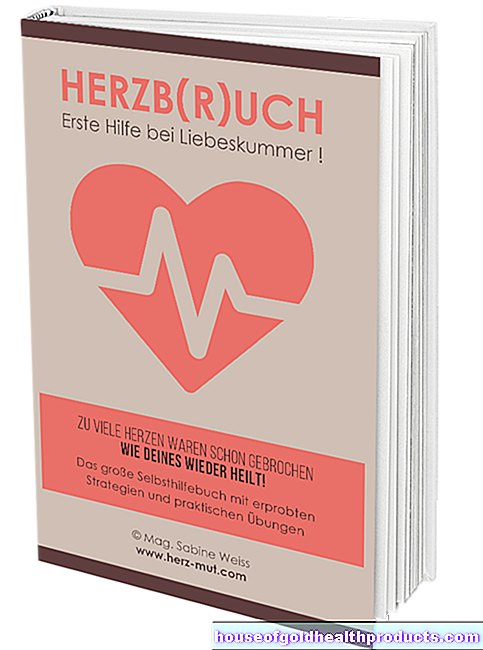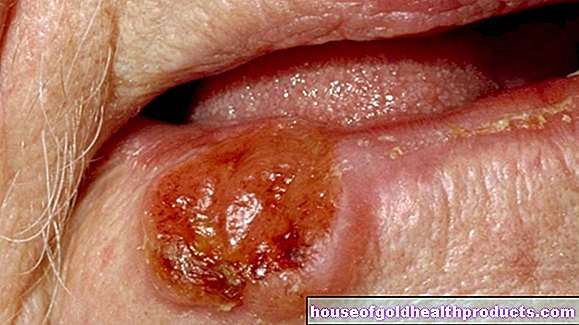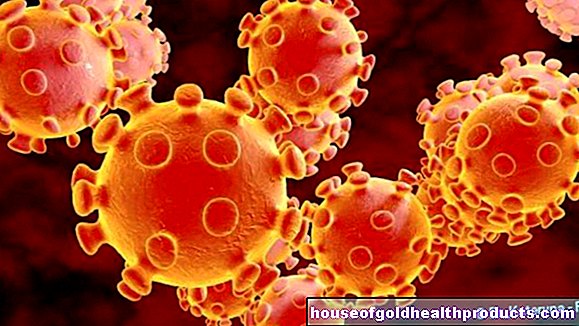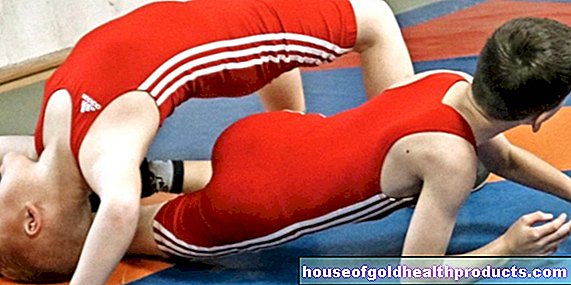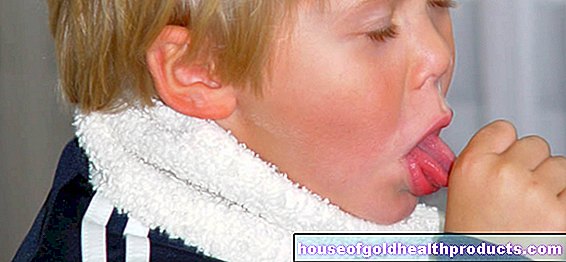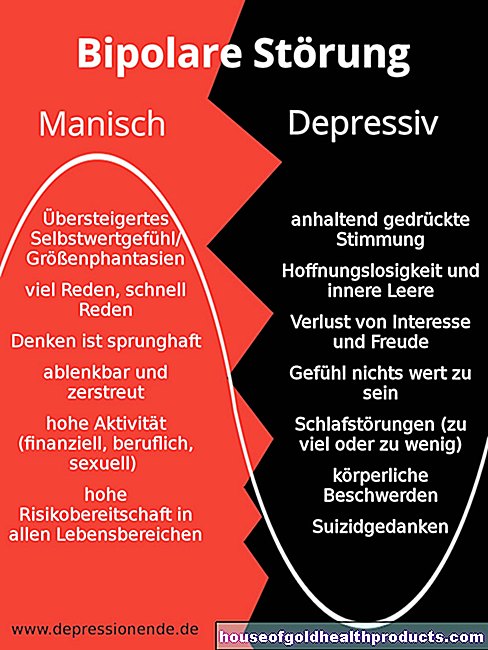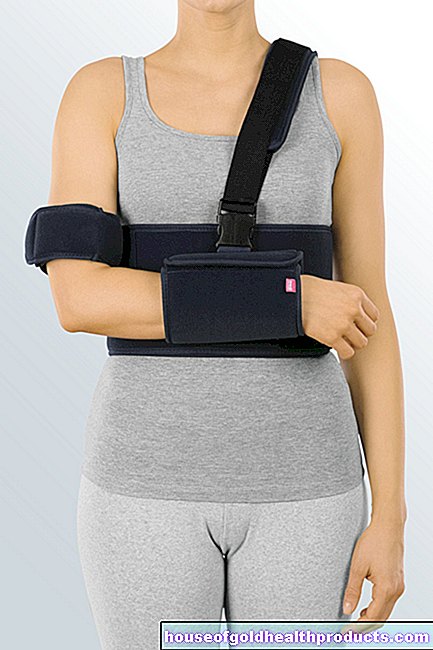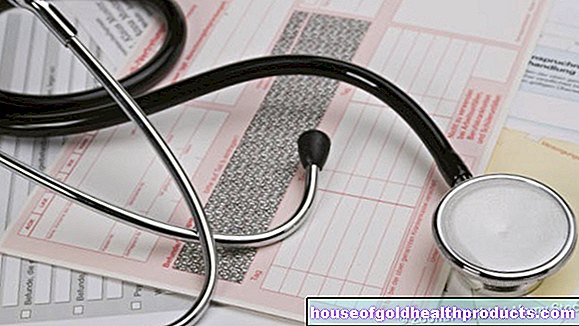Febrile seizure
Tanja Unterberger studied journalism and communication science in Vienna. In 2015 she started her work as a medical editor at in Austria. In addition to writing specialist texts, magazine articles and news, the journalist also has experience in podcasting and video production.
More about the experts All content is checked by medical journalists.Twitching muscles, rolled eyes, and loss of consciousness all indicate febrile seizures in babies and young children. The triggers are often infections that lead to a rapidly rising fever. A febrile seizure usually has a frightening effect on children, but it is usually harmless. The doctor treats a febrile seizure with anticonvulsant medication. Read more about symptoms, causes, course and treatment here!
ICD codes for this disease: ICD codes are internationally recognized codes for medical diagnoses. They can be found, for example, in doctor's letters or on certificates of incapacity for work. R56

Brief overview
- Symptoms: fever, muscle twitching, rolled eyes, sudden loss of consciousness, pale skin, blue lips
- Course: Mostly uncomplicated and unproblematic course, permanent damage is very rare
- Treatment: The symptoms usually go away on their own. The doctor treats a febrile seizure with anticonvulsant medication, among other things. Antipyretic agents and cold compresses are also suitable.
- Description: Seizure that occurs in connection with a fever (body temperature over 38.5 degrees Celsius)
- Causes: So far unclear; a genetic predisposition is assumed in connection with mostly harmless infections (e.g. of the upper respiratory tract), which lead to a rapidly rising body temperature
- Prevention: Prevention is usually not possible; have antispasmodic medicines prescribed by your doctor at home for recurring seizures
- When to the doctor A visit to the doctor is recommended after every febrile seizure.
- Diagnosis: conversation with parents / accompanying persons, physical examination of the child; rarely if serious illnesses are suspected, possibly blood tests, EEG, CT, MRI
How do you recognize a febrile seizure?
When children have a febrile seizure, their whole bodies twitch, their muscles cramp and their bodies are unnaturally stiff and stretched. Usually the whole body is affected, in some cases only individual limbs (e.g. arms and legs). Sometimes the arms and legs suddenly go limp again. Usually the child rolls their eyes upwards, has dilated pupils or a fixed stare.
Some children are pale and sometimes their skin turns blue for a short time, especially on their faces and lips. Breathing is often slowed and pressed. In addition, as the spasm progresses, the child often faints.
Typical symptoms of a febrile seizure are:
- Fever (body temperature over 38.5 degrees Celsius)
- Muscle twitching
- Rolled eyes
- Sudden loss of consciousness
- Pale or blue colored skin
Depending on which symptoms occur during a febrile seizure, a distinction is made between simple and complicated febrile seizures:
Simple (uncomplicated) febrile seizure
A simple or uncomplicated febrile seizure only lasts three to four minutes, a maximum of a quarter of an hour. It affects the whole body and is usually harmless. Usually, there will be no more seizures in the first 24 hours after the first seizure.
Complex (complicated) febrile seizure
A complex or complicated febrile seizure lasts longer than 15 minutes and can recur within 24 hours. In about four out of 100 cases, a complicated febrile seizure is the first sign of later epilepsy or another illness that needs to be clarified by a doctor. This type of febrile seizure occurs much less often.
How does a febrile seizure work?
As threatening as a febrile seizure may look, the child usually recovers from it very quickly. A simple febrile seizure lasts only a few seconds to minutes (maximum 15 minutes). The symptoms usually go away on their own.
A febrile seizure can occur both during the day and at night. Even if the child is asleep, it is possible that they will have a febrile seizure. The child is usually awake for a short time at the beginning of the febrile seizure, but does not notice the actual seizure. After the attack, the child often appears very sleepy and exhausted. After an hour or two, the child will usually have fully recovered.
Is a febrile seizure dangerous?
As a rule, febrile seizures are not dangerous, and certainly not fatal. Parents are usually very frightened when they have a febrile seizure - especially if it is the first one. They are afraid for the life of the child because a febrile seizure often looks very dramatic. The vast majority of the cramps are uncomplicated and unproblematic. The prognosis is usually very good.
Children with febrile seizures develop just as well as children without febrile seizures. The cramps do not damage the child's brain. With simple febrile seizures, however, around every third child is at risk of having the seizures repeated. As soon as the children reach school age, the cramps usually stop.
In any case, consult a doctor after a febrile seizure in order to rule out serious illnesses (e.g. meningitis).
What complications can arise?
Complications are very rare with a simple febrile seizure. The child may injure themselves from the cramping and uncontrolled movements - so keep calm and make sure that they cannot hurt themselves.
In most cases, consequential damage to the mental or physical development of the child is not to be expected: the children develop just as normally as children without febrile seizures.
In most cases, febrile seizures are over by the time the parents and their child arrive at the hospital or at the doctor's. To be on the safe side, doctors will then do some tests and rule out other causes and complications.
Febrile seizures and risk of epilepsy
In rare cases, epilepsy is behind the repeated seizures. The risk of developing epilepsy is particularly higher in children if:
- the convulsions occur before the age of nine months and there is epilepsy in the immediate family.
- the cramps last longer than 15 minutes.
- the child did not develop mentally or physically according to their age even before the cramp.
Without these risk factors, only about one percent will develop epilepsy after febrile seizures.
What can you do about a febrile seizure?
Especially when a febrile seizure occurs for the first time, the most important thing is to stay calm and prevent the child from injuring themselves from uncontrolled movements. Please note the following measures:
- Stay with the child and keep calm.
- Check the child's awareness and breathing
- Call the emergency number as soon as possible (112 in Germany and Switzerland, 144 in Austria), or inform a pediatrician (especially if it is the first febrile seizure).
- Loosen the child's clothes so they can breathe freely.
- Move hard objects out of the way (e.g. edges, sharp corners) so that the child does not get injured.
- Do not hold or shake the child.
- Do not try to suppress or prevent the child's twitching.
- Do not give the child anything to eat or drink (danger of suffocation!).
- Do not put any objects in the child's mouth, even if they bite their tongue.
- If the child is vomiting, gently turn them on their side.
- Check the clock to see how long the seizure is going on.
- When the cramp is over, place the child on its side in a stable position.
- Then measure the child's body temperature.
If the child is passed out and is no longer breathing, start resuscitation immediately and call the emergency doctor!
After the seizure, it is important that a doctor examines the child. This is the only way to rule out other, serious diseases (e.g. meningitis) with certainty. In addition, doctors recommend observing a child as an inpatient in the hospital up to about one and a half years of age after the first febrile seizure.
Possible reasons for hospitalization include:
It is the child's first febrile seizure.
- It's a complicated febrile seizure.
- The cause of the seizure is unclear (e.g. suspected epilepsy).
The treatment of the febrile seizure is basically based on the symptoms, the severity and the frequency of the attacks. If necessary, the doctor will administer antipyretic medication (e.g. paracetamol or ibuprofen). He also recommends cool compresses to lower the fever. If the cramp lasts longer, he will administer anticonvulsants (benzodiazepines, e.g. diazepam or midazolam, in more severe cases so-called anticonvulsants).
If the child has had several febrile seizures and the seizures last longer than a few minutes, the doctor may prescribe emergency medicine for the parents to take at home. Usually this is an antispasmodic drug that is administered through the child's anus like a suppository. Your pediatrician will tell you exactly how to use this and how to store the medication.
What is a febrile seizure?
A febrile seizure is a seizure caused by a rapidly rising body temperature (usually over 38.5 degrees Celsius). Febrile seizures are more common, especially in young children. A febrile seizure in children is usually frightening, but it is usually harmless.
Who is particularly affected?
Febrile seizures occur mainly in children between the ages of six months and five years. About three to five percent of all young children are affected by a febrile seizure at least once. Two thirds of all children experience a febrile seizure only once in their life.
Hereditary factors also play a role: If the family has already had febrile seizures, the likelihood that the child will have seizures increases.
At a later age (even in adults) a febrile seizure is rare, but possible. Why this happens has not yet been clarified.
What triggers a febrile seizure?
It is not exactly known why some children are prone to convulsions when they have a fever. According to current knowledge, the brain in people with febrile convulsions is predisposed to react to fever or to a rapid rise in body temperature (usually over 38.5 degrees Celsius) with seizures in a certain development phase. Doctors assume that the brains of children between the ages of eight months and four years are particularly susceptible to seizures.
In babies, febrile seizures occur at temperatures as low as 38 degrees Celsius.
The faster the body temperature increases, the more likely it is that a febrile seizure will occur. All illnesses that are accompanied by a fever are therefore basically able to trigger a febrile seizure. Usually there is initially a viral febrile infection such as a gastrointestinal infection or an infection of the upper respiratory tract, which causes the body temperature to rise rapidly.
Febrile seizures often occur as part of a three-day fever (infection with the human herpes virus type 6, HHV 6). Bacterial infections (e.g. streptococcal angina or urinary tract infections) are less likely to cause febrile seizures.
Whether a febrile seizure develops mainly depends on how quickly the body temperature rises.
Serious infections such as meningitis (meningitis) or pneumonia (pneumonia) are the cause of febrile seizures only very rarely. Febrile convulsions can also be observed after vaccinations (e.g. against whooping cough, measles, mumps, rubella, polio, diphtheria or tetanus).
It is not yet fully understood whether the fever itself or the fever-causing infection causes the seizure. Doctors assume that a predisposition to febrile seizures is congenital and therefore occurs in several families in some families.
After a fever, it is important that the doctor rule out any other serious illness in the child with certainty.
How can you prevent febrile seizures?
It is not possible to completely prevent febrile seizures. Some parents give their children antipyretic medication from a body temperature of 38.5 degrees Celsius. They hope that this will protect the child from a febrile seizure. However, there is no scientific evidence that this prevents febrile seizures. Doctors therefore advise against giving antipyretic drugs as a preventive measure!
Only use antipyretic agents after consulting your pediatrician. "Over-therapy" with antipyretic preparations must be avoided at all costs!
If the child has already had a febrile seizure, doctors sometimes prescribe the parents emergency medication (e.g. anticonvulsants) to take at home. Only give this if the child actually has a fever and only as prescribed by the doctor.It is not recommended to give the remedies as a preventive measure in the event of an infection!
Febrile seizures can rarely be prevented.
When to the doctor
After the first febrile seizure, a child should always be thoroughly examined by a doctor. Exceptions exist if children have already had several febrile seizures that were easily controllable and passed quickly. However, since every new spasm has other causes, it is advisable to always seek medical advice.
In the case of a complicated febrile seizure, it is imperative that the child be thoroughly examined in the hospital. As a rule, children with a complicated febrile seizure stay in the hospital for at least one night to clarify the exact cause and to observe the course.
How does the doctor make a diagnosis?
The doctor first asks the accompanying persons (mostly the parents) which symptoms occurred, how long the seizure lasted and which parts of the body were affected in which order. Since a febrile seizure manifests itself through typical symptoms (fever plus seizure), it is usually easy for the doctor to diagnose.
Then the doctor will perform a physical exam on the child. Among other things, he measures the child's body temperature. Through the questioning and the physical examination, essential information can usually be obtained, which in the vast majority of cases does not require further examinations in the case of uncomplicated febrile seizures.
Only if serious illnesses such as meningitis are suspected will the doctor carry out further examinations to clarify the cause. These include, for example, blood tests or an examination of the fluid in the brain and spinal cord (lumbar puncture) to rule out infections.
Epilepsy or other neurological diseases can be diagnosed, among other things, by measuring the brain wave (electroencephalography, EEG). Imaging examination methods such as computed tomography (CT) or magnetic resonance tomography (MRT) make the structures of the brain visible in order to rule out malformations or tumors as the cause of complicated febrile seizures.
Tags: dental care menshealth elderly care